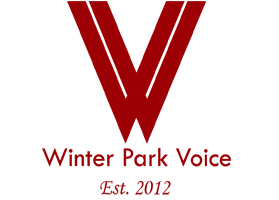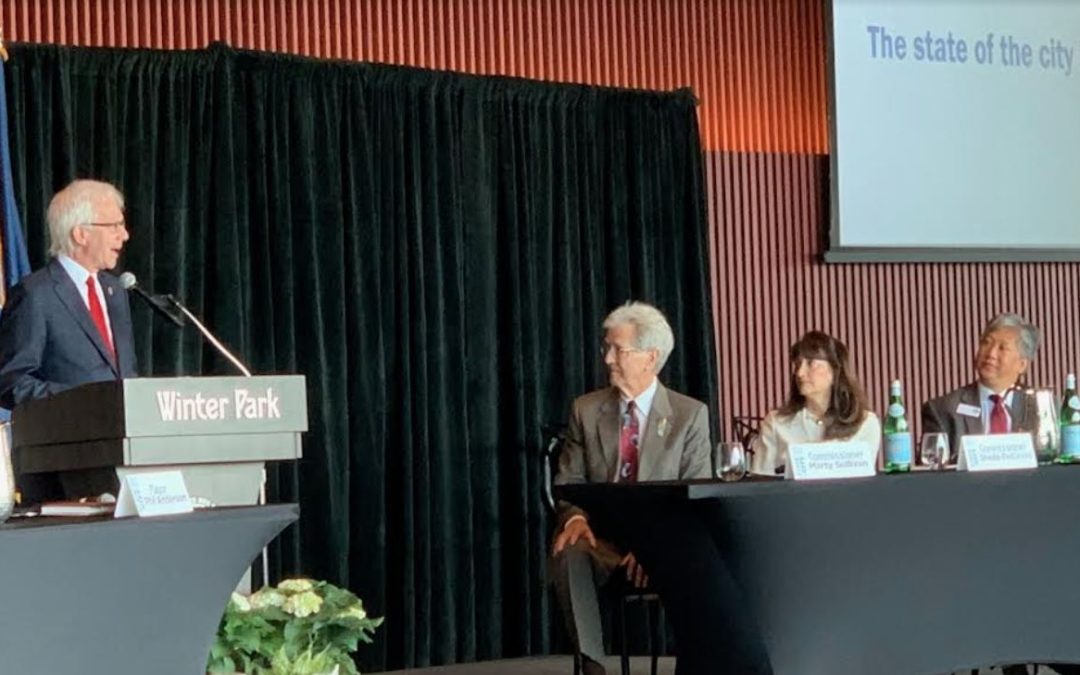Mayor says future power sources to be city’s ‘biggest’ decision
Winter Park’s 55th mayor, Phil Anderson, delivered his state of the city speech focusing on the environment and ‘small-town feel’
Mayor Phil Anderson zeroed in on imminent decisions over Winter Park’s environmental policies in his “State of the City” address on Friday, calling the choices about how to provide electricity to residents and business the biggest decision “for the next 50 years” and said flooding from Hurricane Ian was a “wake-up call” prompting changes to how to move water through the region.
A study is underway to determine what sources of power – natural gas, coal, nuclear or solar — Winter Park’s electric utility should purchase. Winter Park is one of only 33 municipal-owned providers in a state where more than three quarters of the population is served by one of the large investor-owned utilities such as Duke Energy or Florida Power & Light.
“This is probably the biggest policy decision that this city is going to wrestle with for the next 50 years,” Anderson said, noting he wants to reduce the city’s carbon footprint “responsibly.” “We’re going to do this right.”
He also noted the need to work with other nearby governments from Osceola County to Jacksonville to address how the region will contain onslaughts of water brought by major storm events such as Ian, which dumped more than 15 inches of rain on Central Florida in September 2022.
Anderson noted that “by the old math” such a rain event would happen only once every 500 years. “We think the old math may not work and we’ve got to do something about it,” he said, though he said it was unclear how much the changes would cost.
Winter Park, which has about 30,000 residents, remains on strong financial footing with a budget of just under $200 million. That’s more than an 11% increase over the previous year, including $1.6 million of new revenue from the newly-acquired Winter Park Pines Golf Course.
Anderson emphasized his desire to protect the city’s “small-town feel” and neighborhoods as well as the health of the shopping and dining corridor along Park Avenue. Part of those efforts will include enhancements to the city’s parks and potential traffic calming measures.
Proposed changes to State Road 426, a major east-west carrier of traffic through the heart of Winter Park to the growing Seminole County city of Oviedo, are likely to be a subject of debate this year.
A group of citizens known as ‘Fix 426’ is advocating for safety changes and the Florida Department of Transportation is considering ways to address concerns on S.R. 426 between Park Avenue and Lakemont Avenue, a stretch of the road carved through the city’s chain of lakes and neighborhoods with a series of sharp curves.
“People do not feel safe walking those roads,” Anderson said. “Because of grassroots organization we are seeing great progress and great ideas being shared. We may not get everything we’d like to see but we are going to get a lot of things we need to see.”


I’d like to know more about the 426 ideas being shared. What are the data on accidents, speed and traffic load?